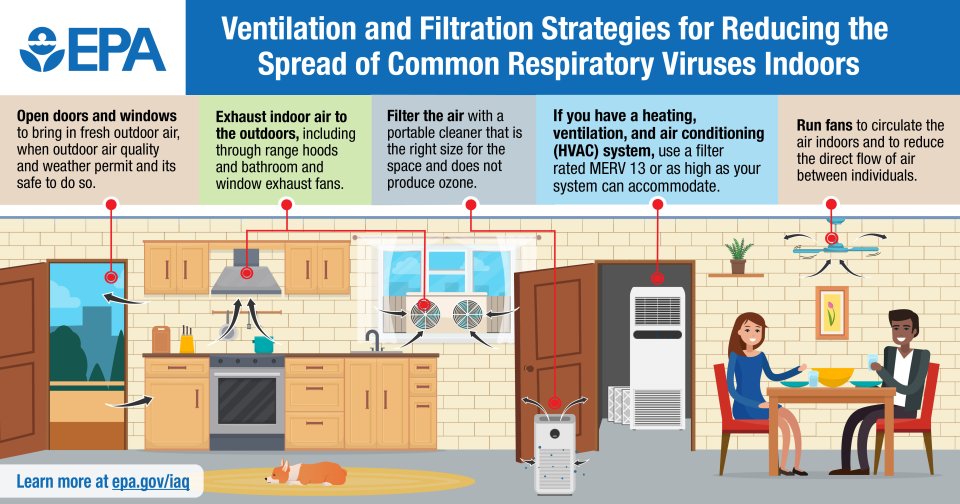Ventilation and Filtration Strategies for Reducing the Spread of Common Respiratory Viruses Indoors Infographic
Learn strategies to improve ventilation and prevent the spread of common respiratory viruses indoors.

Text Version: Ventilation and Filtration Strategies for Reducing the Spread of Common Respiratory Viruses Indoors Infographic
Ventilation and Filtration Strategies for Reducing the Spread of Common Respiratory Viruses Indoors
- Open Doors and Windows to bring in fresh outdoor air, when outdoor air quality and weather permit and its safe to do so.
- Exhaust indoor air to the outdoors including through range hoods and bathroom and window exhaust fans.
- Filter the air with a portable air cleaner that is the right size for the space and does not produce ozone.
- If you have a heating, ventilation, and air conditioning (HVAC) system use a filter rated MERV 13 or as high as your system can accommodate.
- Run fans to circulate the air indoors and to reduce the direct flow of air between individuals.
